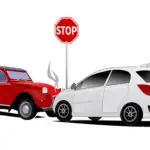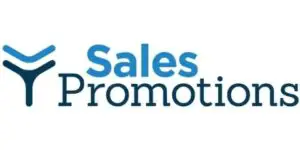Table of Contents
*This post may contain affiliate links. As an Amazon Associate we earn from qualifying purchases.
Today’s wise industry disruptors value the five forces model to succeed beyond anything that could have been imagined before the tech age.

Airbnb, Uber, Warby Parker, Dollar Shave Club and so many more have found a crack in the fabric of established business models to disrupt competitors and attract buyers for their products.
The power of the buyer to pull information from online searches has created a new consumer decision-making process. The old model, where Industry pushes products on consumers through repetitive advertising, is fading away.
Products that provide a unique experience for reduced costs have increased the power of the buyer by empowering consumers with more options.
Look For Cracks In Established Industry
In 1980, Michael Porter’s book: Competitive Strategy, Techniques For Analyzing Industries And Competitors, introduced a more comprehensive model than the popular SWOT analysis and other conventional strategic planning models.
The comprehensive study acknowledged that different industry environments, their states of maturity, exposure to international competition and other factors, play a role in gaining a competitive advantage.

For example, once upon a time, there were two great US airlines – Eastern Airlines and Trans World Airlines. In their time they ruled the skies.
Then the airline deregulation act of 1978 happened. Deregulation removed barriers to entry for competitors through lifting government controls over routes, fares and market entry of new competitors.
These two established industry giants continued doing business as usual in a rapidly changing environment. Eventually, both airlines became financially unstable. Competitors merged with them or bought them.
Since the book’s publication, businesses have often used the prevailing five forces to identify strategies that an established firm, or new market entrant, may use to gain a competitive advantage.
[amazon fields=”2806270626″ value=”thumb” image_size=”large” image_align=”center”]
[amazon fields=”2806270626″ value=”button”]
Competitive Five Forces Focus And Industry Attractiveness
Businesses use the five forces of competitive position model to identify the strengths of a business as it relates to a larger industry.
It is not a stand-alone tool to improve the processes of an organization. The model compares an organization against an established industry. The comparison identifies what you are up against and finds your advantage over competitors
Here are Porter’s Five Forces you can use in your competitive analysis
- Competition in the Industry
- Potential of New Entrants in the Industry
- Power of Suppliers
- Power of Customers
- Threat of Substitute Products
I have been involved with developing, analyzing, screening and launching new products. Over the years I learned many things, the hard way.
First and foremost I found that if products don’t pass a screen test against all the competitive five forces, it probably should be shelved until something in the business environment changes.
Following is a personal case study demonstrating how applied knowledge of the five forces model identified cracks in the fabric of an established industry that gave way to competitors.
[amazon fields=”B00MFNCU26″ value=”thumb” image_size=”large” image_align=”center”]
[amazon fields=”B00MFNCU26″ value=”button”]
Playing In An Established Industry Sandbox
For many years I worked in the marketing department for Avis Rent A Car. Our slogan was “We Try Harder”. The company created the slogan because we held the number two airport market share position behind Hertz, the industry leader.
The business strategy was focused on maintaining the number two share position. Striving to be the second best in an industry may not seem like a winning strategy.
However, the secret to Avis’ financial success was that the company was able to attract highly profitable market segments while giving less profitable business to our competitors. We focused on profit while our competitors chased market share at all costs.

When we became aware of the competitive five forces, our strategic thinking was totally disrupted.
Our industry sandbox was measured by ‘airport’ market share. We never fully considered the other rental car companies that transacted business off-airport as competitors.
A strategic consulting firm we hired to provide an outside perspective of our industry brought new thinking to our attention.
In reality, the larger industry included previously unmeasured off-airport market share. Under their market share analytics, Avis was number five and declining. Without realizing it, we had become complacent in a mature industry.
Here’s how our team came to understand how competitors benefited using a five forces competitive analysis
Competition within the industry:
We were fighting for airport market share. This required that we operate our locations on airport property and pay big fees to airports and municipalities for the privilege.
Our competitors operated off-airport. They did not have the same operating costs. They then passed on their savings to buyers.
These same off-airport competitors also maintained a network of franchises in city and suburban areas. This gave buyers flexibility to conveniently rent when they arrive at their hotel or other destination. Again at reduced costs.
Potential for new entrants into the industry:
Our primary market was business renters that got off an airplane. Convenience, service and the best business products were our specialty. We passed on the costs associated with doing business on-airport to corporate buyers.
Off-airport competitors became more sophisticated in transporting passengers to their locations and marketing to our buyers. The customer’s bargaining power was increased. We woke up to realize we were fighting for share in an entirely new sandbox.
Power of Suppliers:

At the time, Hertz did business with Ford and Chrysler and Avis did business with General Motors to supply rental vehicle fleets.
Parallel to the growth of off-airport competitors, foreign car products were gaining a strong foothold over in the US market.
Seeing an opportunity to engage foreign car manufacturers, off-airport competitors used their bargaining power to develop low costs partnerships with imported car manufacturers.
These manufacturers were eager to sample their product to U.S. car renters, so they kept costs down.
The Power of Customers:
More corporate buyers and individuals choose cost savings over on-airport convenience. The business began to slowly shift to new market entrants as cost savings and unique foreign cars created a new allure.
Threat of substitute products:
See all of the above!
[amazon fields=”0684841487″ value=”thumb” image_size=”large” image_align=”center”]
[amazon fields=”0684841487″ value=”button”]
Taking Action With New Competitive Thinking
The good news is that the organization quickly understood the changing industry and was able to adapt. Using the bargaining power afforded to an industry giant, the organization:
- Launched new products
- Expanded operations to downtown and suburban locations
- Used economy of scale to fend-off competitive strategies at reduced costs
What began as a wake-up exercise became a challenge to redefine our business strategy.
This situation may have happened decades ago, but the scenario is an all too familiar one today.
Tech Startups Disrupting Everything

In the above case study, an established industry participant was able to define a threat and devise products to compete.
What is the hotel industry doing to change their marketing strategy to compete with the local flare that is Airbnb’s positioning?
How could the taxicab industry, operating in different municipalities, even know that the rideshare threat was slowly encroaching upon them? When the Uber’s of the world reached critical mass, it was almost too late to do a competitive analysis.
The only bargaining power the taxi cab unions and hoteliers had was to point out the loss of taxes to the municipalities they serve as a deal breaker.
Once rideshare and roomshare companies taxed consumers, where required, there was little the industry could do to stop free trade.
New Lessons To Be Learned
As sure as tech startups create new business models and mature industries are stuck in old paradigms, there are going to be huge disruptors happening. Many times industry participants will be blindsided. Could it happen to your organization, your small business or to you personally?
Consider Bitcoin. We are all part of the established money industry. Many of us don’t know what to even make of the new cryptocurrency.
If a Bitcoin competitive five forces analysis were done today, there may be many barriers to entry for it to expand as a global currency. However, acceptance is changing. A slight shift in culture or society could very well change everything.
It’s a good idea to continually assess the external business environment using a competitive five forces analysis. Take a hard look at your internal resistance to change. Look at a wider view of the world to see what industry you are really in.
Complacency is the beginning of the end.

